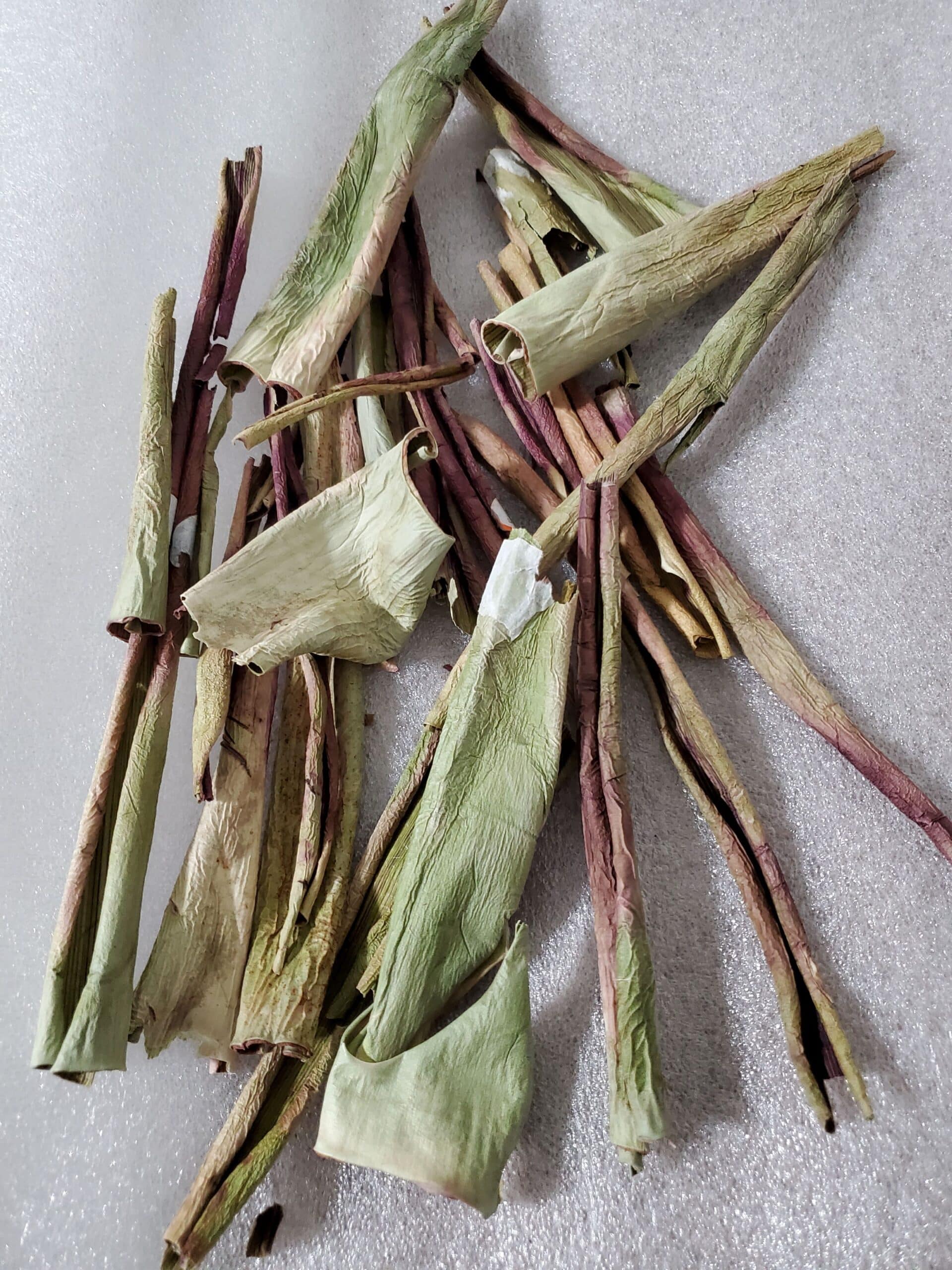“It’s likely that millions of tons of aloe peels are disposed of globally every year,” says Debasish Bandyopadhyay, Ph.D., the project’s principal investigator. “We wanted to find a way to add value and make them useful.”
Bandyopadhyay first noticed that insects were avoiding the aloe leaves despite attacking leaves from other surrounding plants while visiting an aloe vera production center. The company had wanted to send Bandyopadhyay home with some of their products and was confused when he asked for permission to take the discarded aloe rinds/peels instead.
Savvy home gardeners have already begun to use aloe as an ingredient in their natural pesticide mixtures with onions and garlic, but they typically use gel, not peels. On a larger scale, aloe peels are treated as agricultural waste which is generally used to create biomass that helps to improve the soil quality at aloe farms.
Aloe peels/rinds in hand Bandyopadhyay and colleagues from the University of Texas Rio Grande Valley set out to investigate the potential insecticidal properties that they may contain. To keep the bioactivity unaltered the rinds were dried out in the dark at room temperature by blowing air over them. Various extracts were then produced with hexane, dichloromethane (DCM), methanol, and water.
The hexane extract was noted to contain octacosane compounds that have known mosquitocidal properties. The DCM extract displayed much higher insecticidal activity against agricultural pests than the hexane extract. High-performance liquid chromatography-mass spectrometry was used to profile the DCM extract for further analysis which, not surprisingly, identified over 20 compounds containing antibacterial, antifungal, or other potential health benefits.
Of interest 6 of the identified compounds, octacosanol, subenniatin B, dinoterb, arjungenin, nonadecanone and quillai acid, are known to have insecticidal properties which could be contributing to the effects of the aloe peels/rinds. Most importantly these compounds are not toxic, which means that there are no significant safety concerns with creating an aloe peel/rind-based insecticide for mass use. (Investigations of the methanol and aqueous extracts are still ongoing, but both are showing strong insecticidal activity)
Moving forward the researchers hope to test how well the identified aloe-based insecticide compounds work in real-world fields against a variety of agricultural pests. The researchers also want to test the compounds for anti-tick and anti-mosquito properties which could lead to the development of a non-toxic insect repellent for consumer use.
“By creating an insecticide that avoids hazardous and poisonous synthetic chemicals, we can help the agricultural field,” says Bandyopadhyay. “But if the peels show good anti-mosquito or anti-tick activity, we can also help the general public.”
Accompanying video: https://www.youtube.com/watch?v=Htm7TNP7FAU




